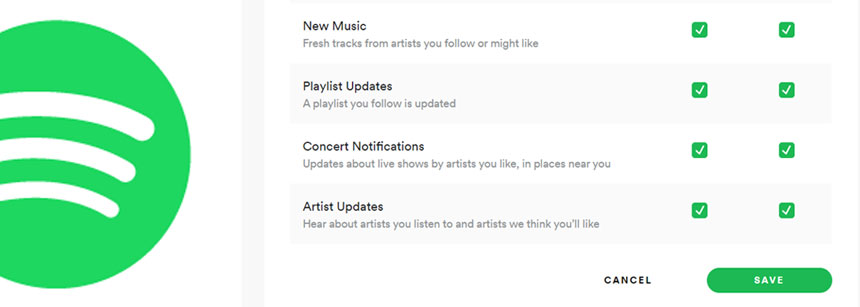
Communication is a central part of any customer loyalty program. When we consider the basic stages of any member lifecycle engagement strategy, effective communication is necessary every step of the way.
Whether that be the initial onboarding or the later stages of growth and retention, communication is critical. Thankfully, marketers have a powerful tool at their disposal; the preference centre.
A preference centre is a function that allows subscribers to pick and choose which marketing emails they receive and the frequency at which those emails arrive. Found as a link in an email footer or the profile settings of a website, preference options give members more control.
The three types of preference centres
When receiving electronic communications, it is best practice to allow members the ability to adjust the kind of communications they receive and how often they receive them. Implementing the right type of preference centre from the initial onboarding supports every successful loyalty program.
- Time-based preference centres
This type of preference centre is the simplest and focuses on the frequency of emails. It allows the loyalty program member to choose when and how often they receive communications. Many time-based preference centres will also provide the option to opt-out of communications for a short period of time.
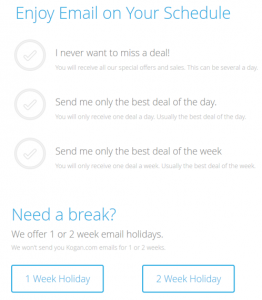
- Content-based preference centres
This option allows the loyalty program member to choose which kind of content they want to hear about, and vice versa. Allowing members to pick and choose the content they receive provides a clearer picture of the member’s interests. Thus, marketers can target more relevant communications to improve member engagement.
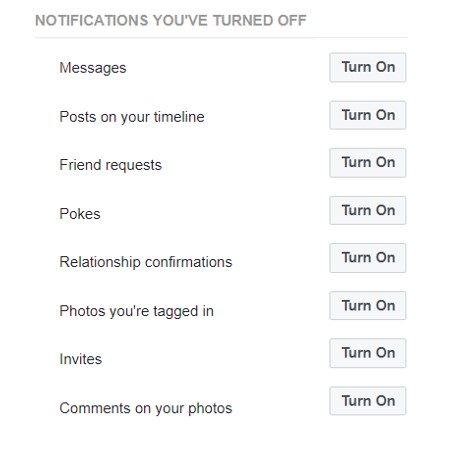
- Time & Content hybrid preference centres
The hybrid model is the most sophisticated and the one recommended as best practice for any loyalty program. It breaks down communications by both time and content. While the hybrid preference centre does provide a higher degree of personalisation, keep in mind too much information can be overwhelming.
Good preference centre design with examples
The main reasons why members unsubscribe from communications lists in the first place is because emails come too frequently, or the content becomes boring and repetitive. Thankfully, a well-designed preference centre can fix these issues and nurture a member through the lifecycle.
Data-driven loyalty programs are increasingly the norm, so it’s important to follow best practice to stop your communications from being lost in the digital noise.
- Provide choice
When receiving communications, members should be provided the option to unsubscribe from one communications list only, rather than all communications at once. Not everyone will be happy to receive every single piece of information your brand has to share, but they may still want to hear from you.
Spotify does a great job of providing different options all on a single page. Bonus points for allowing users to pick and choose between email and push notifications.
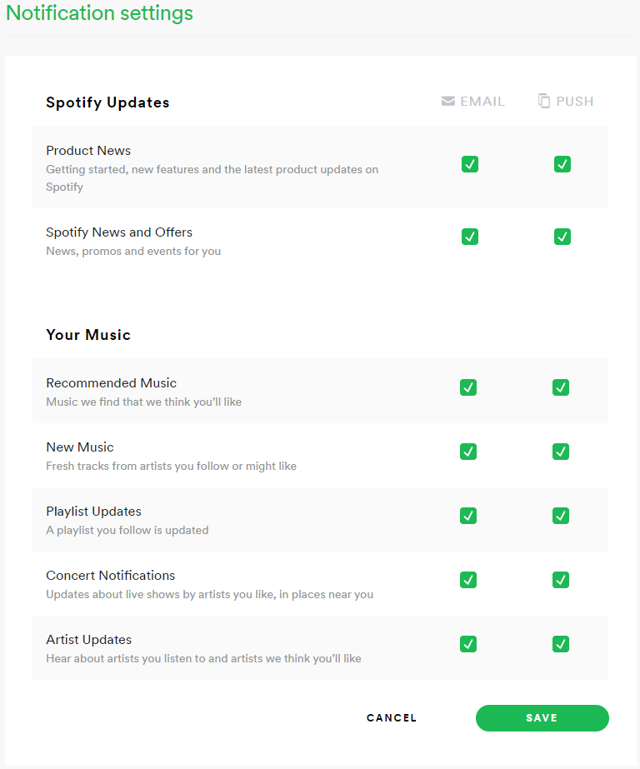
- Keep it simple
A preference centre should fit on one single page. Use standard design practices to ensure content is easy to understand and navigate. Provide your members with options but recognize too much information can lead to higher levels of abandonment. Find a balance and keep it mobile friendly.
Oporto has done a remarkable job with their Flame Rewards loyalty program, and their preference centre is just as effective. Oporto is a great example of the time and content hybrid model done well.
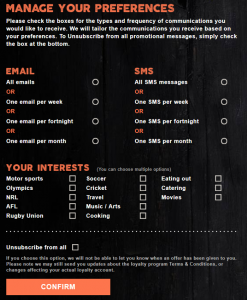
- Make it easy to update data
It’s important to drive traffic to the preference centre page to keep member data fresh. Get members to update their preferences from time to time by sending them a specific email regarding their preferences. For another idea, add a member’s preferences in the email footer and they’ll be more inclined to click and update.
The email from Variety is direct yet conversational, and drives members to update their preference centre. On top of that, it also exemplifies an automated retention campaign which forms part of the brand’s overall lifecycle management strategy.
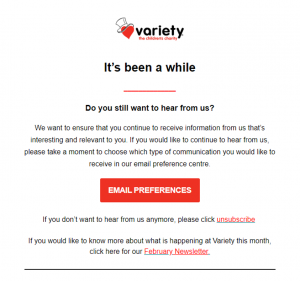
Let there be choice
A well-operated loyalty program delivers personalised communications to ensure members receive content and offers which are relevant to them.
In an age of email and information bombardment, frequency and relevancy are a major factor in deciding whether your communications are genuinely effective. Preference centres provide members the choice they expect and allow brands to convey the right message.
Scott Harrison is the Marketing Manager of Loyalty & Reward Co, Australia’s leading loyalty consulting agency. He has worked in several marketing roles across various industries including eHealth, property, and financial services. As Marketing Manager, Scott applies his skills across all aspects of the business, including loyalty program design, member engagement, and loyalty strategy development.
Let’s connect: https://www.linkedin.com/in/scott-harrison-29530615a
